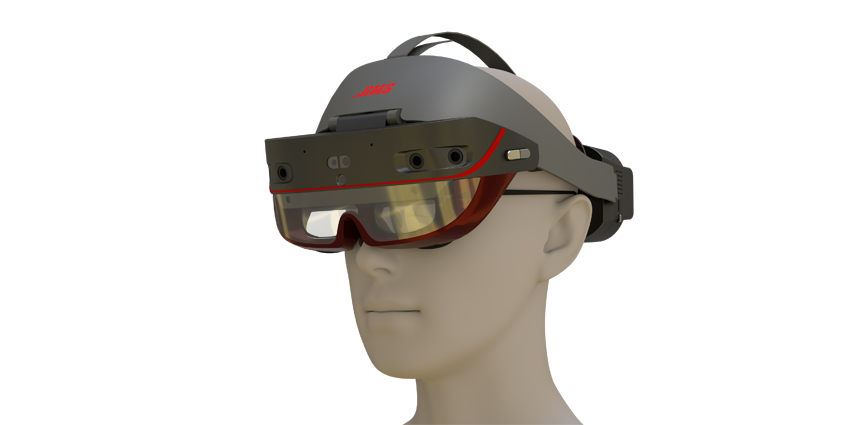This week, Meta CTO Andrew Bosworth noted in his most recent Instagram Q and A session that while the firm’s Reality Labs division – an XR research and development space – can produce incredibly high XR device displays up to roughly “100 [PPD]” in testing scenarios, the firm cannot make such details for consumer end-devices; at least not yet.
While Meta can achieve massive display figures in internal testing scenarios, Bosworth refers to these prototype displays as “time machines” that showcase the upper echelon of XR display capabilities – achievable for end devices in the future. Reality Labs works to reduce the experimental displays to the degree that modern headsets can manage.
Andrew Bosworth explained [as compiled by Mixed-News]:
In Reality Labs research, we’ve had the team built these kinds of time machines to see where’s the upper bound that our ability to distinguish, and it’s pretty high. We build them up to like, I think 100 [PPD], and you can still tell. Now, there is a curve that kind of flattens out at a point where the incremental improvement that you can see between 80 and 100 isn’t that much, but you can tell the difference.
Bosworth also noted that, in virtual reality displays, the way Meta measures resolution is pixels per degree, adding that the “total number of pixels doesn’t totally matter because it has to do with how far are they from your eye and how does the lens remap them – there’s other things too that matter a lot, uniformity, how many pixels in the centre versus the periphery and so on and so forth.”
Bosworth concluded by noting:
I think it’s pretty far up there. We don’t know how to produce displays at that kind of density, the power required in the form factor required. Like it’s we are not even there yet, so it’s a ways off.
Experimenting with high-end displays is not the only aspect that Meta is leveraging to ensure future stakes in the XR HMD marketplace. During the firm’s most recent earnings call, Susan Li, the CFO of Meta, noted that the firm is making “important progress” on its longer-term AI and Reality Labs initiatives that “have the potential to transform the way people interact with our services over the coming years.”
Li added that Meta continues to “see compelling investment opportunities to both improve our core business in the near term and capture significant longer-term opportunities in generative AI and Reality Labs.”
The earnings call revealed that Meta’s Q1 total revenue reached $36.5 billion, up 27% in both reported and constant currency. Reality Labs reported a Q1 revenue of $440 million, up 30% due to Quest headset sales. However, the division’s expenses were $4.3 billion, down 1% YoY. Its operating loss was $3.8 billion.
While also experiencing revenue upticks last year, Reality Labs is generally seen as a money black-hole. Still, this view is due to Meta taking a long-term investment approach to its XR division – not a negative factor by any means; if the investment pays off, that is.
Li noted:
Our other long-term initiative that we’re continuing to make significant investments in is Reality Labs. We are also starting to see our AI initiatives increasingly overlap with our Reality Labs work. For example, with RayBan Meta smart glasses
Bosworth’s notes on the future of Meta’s display ambitions and Li’s earlier comments on creating advanced AI-ready AR smartglasses could paint a picture of the firm’s future hardware ambitions.
Connect will come up quickly, and Meta is expected to announce big news in response to Apple’s device debut and others entering the market in 2024. Historically, Meta has revealed big projects and products during its online Connect showcase.
Meta’s Ex-CTO Concerned Over Open OS Approach
The news comes after Meta announced that it will allow third-party developers to create applications for its XR products by opening up its Meta Horizon OS. This move aims to provide broader applications for its Quest product line. In contrast, Apple is creating a closed ecosystem to support its spatial computing vision, which opposes Meta’s new open approach. Meta appears to be competing with Apple’s approach to its hardware ecosystem.
Despite Mark Zuckerberg‘s announcement that sparked interest in an Android-like XR OS, ex-Meta CTO and renowned video game innovator John Carmack expressed concern over Meta’s recent move.
Carmack explained that allowing development partners to access the full Horizon OS for standard Quest hardware “could be done very cheaply and would open up a lot of speciality applications and location-based entertainment systems, but that would be a much lower key announcement.”
Carmack also noted that “Meta already sells the Quest systems basically at production cost, and just ignores the development costs,” so, therefore, Meta open Horizon OS won’t “result in cheaper VR headsets from other companies with Quest equivalent capabilities – even if the other companies have greater efficiency, they can’t compete with that.”
Moreover, the famed developer noted that the new OS “brings with it a tension.” Carmack explains that “because Meta as a company, as well as the individual engineers, want the shine of making industry-leading high-end gear. If Meta cedes those ‘simple scaling’ axes to other headset developers, they will be left, leaning in with novel new hardware systems from the research pipeline for their high-end systems, which is going to lead to poor decisions.”







